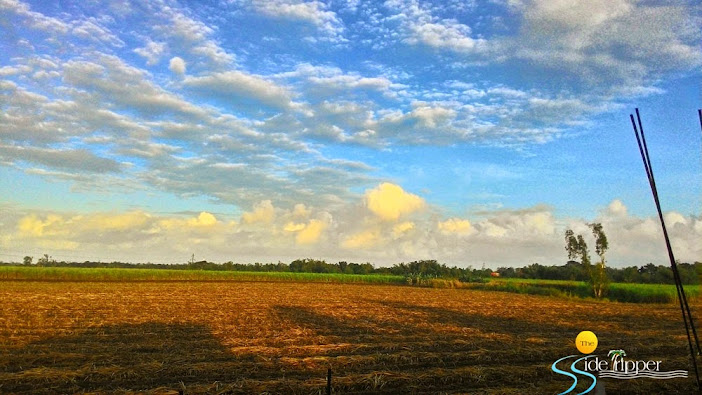 People say there is no place like home, for it is where memories have started to be built, whether or not they are good or bad.
People say there is no place like home, for it is where memories have started to be built, whether or not they are good or bad.
Each home is unique, and it is where the heart is. I am thankful that I feel at home no matter where I am, and it’s just that my hometown happens to be my favorite home.
There are no people like those in my birthplace, as it is where I started getting to know my neighbors, friends and the usual people I continue to meet every time I am home. These people would be coming in and out of our house without any hesitation to close the door anymore and anytime. That’s how close-knit we are in that place.
People who are passing by are hailing our family with reverence. Sadly, a lot of the people who used to be close to me are not there anymore. Many of them have left and went to other places to tread a greener pasture, but I am sure wherever they are, I am confident that their memories and the love for our place are still there, too. I am sure that like me, it is also their dream to be back and visit there even for once in a while.
Negros Occidental: A Retirement Haven
Negros Occidental is no longer just the “sugar bowl of the Philippines,” the province’s label being a producer of more than half the nation’s sugar output. Negros is now being developed as a retirement harbor not just for overseas Filipino workers and foreign nationals but also for those who are natives of the island that are mostly working in other places.

Sugar Central
The present of peaceful environment for housing and subdivision, world class medical facilities and hospitals, as well as the development of beautiful natural attractions and resorts are attractive considerations of choice for those who want to retire someday. Most of the towns and cities are into preserving the natural environment and ecosystem even with new industrial developments that are coming in. New tourist spots and resorts are now into our place. It is no wonder why Negros Occidental is considered by many as one of the best places to live and retire.
Most of us have fond memories that involved food and places where we came from. Dishes that were cooked by our grandparents, parents, relatives, or neighbors who bought them from a carinderia or restaurant nearby has a way of transporting us back to the past. Negros Occidental has its own distinct food of its own. That’s why every time I am home, I make sure to try those dishes and desserts.
When it comes to desserts, there are the likes of the piaya, baye-baye, pinasugbo and seldom would we see now the “kalamayhati”. One should also try The El Ideal for its pudding and other pastries.
For the main course, there are the laswa, cansi and inasal. My wife is happy having “laswa” even every day. Laswa is a dish consisting of a mix of different vegetables like alogbati, squash, okra, patola, eggplant, which are boiled with water and garnished with dried fish.

Cansi

Mango and Timan

Laswa

Chicken Inasal
As for me, the “timan” or “budbud” is on top of my favorites. This is rice cake wrapped in banana leaves, partnered with ripe mango and egg. You can even take it with native coffee every morning. I also enjoy cansi (beef broth) or fish tinola for lunch. What made these usual broth dishes different from other soups is that there is the use of “batwan” to make the broth sour. I also like grilled meats seasoned only by salt. Chicken tinola is also a winning dish as it uses fresh and native chicken boiled with papaya and either of malungay or pepper leaves. For dessert, I like Manapla’s puto (rice cake) which I buy whenever I get the chance to pass by the town of Manapla, where mobile vendors abound along the main highway of this town. I remember that this puto was all I had on my way riding on a Ceres bus to Bacolod from home in Paraiso Sagay, the only breakfast I used to have then before attending the ROTC training on a Sunday.
In two weeks of our usual length of stay, I prefer to it still go to the usual restaurants where I used to love eating before, even though these towns now have the popular food chains familiar in Manila. I still keep coming back to Sharyn’s Cansi House not just because of its cansi, but I also remember my grandfather every time he was visiting me in my boarding house in Bacolod during my college years. He used to bring me here where we ate cansi along with his favorite grilled “manumbok” (blue marlin), although my wife also love milkfish “kinilaw”, we also love the grilled chicken of Manukan Country especially that of Aida’s and Nena’s.
For seafood, the place called “Pala-pala” where one can buy fresh sea food and fish in a wet market, then the staff can cook what you have selected for you in a way you want them cooked.
In Sagay, there’s the Enting’s Manukan although my recent experience in dining in this place is no longer as gastronomical. I know Enting personally, I recall that he used to be very hands-on in managing his restaurant.
Negros Occidental has lots of famous and old restaurants, and you will never get lost eating in Bacolod, the capital of Negros. In this place, my favorites are the 21 Restaurant (21 Food Corner), Bob’s, Chicken Deli, Bacolod Chicken House, Chinky’s, and Junie’s.
I am not sure if some of them are still there. Negros Occidental Classics
As for bakeshops, Bakers and Foodman bakeries are famous. I miss the hamburger, brown “baye-baye” and the “pata” soup at the Ceres and North terminal, and likewise the “kalamayhati,” a sweet dessert made of coconut and brown sugar, and then wrapped inside the coconut husk in Banago Pier where the ferries from Iloilo and Manila would dock before. There is also the “Aroscalduhan” along Libertad Street’s sidewalks where we used to hang out after a couple of beers if we have extras from our allowance and after exams.

El Ideal

Cansi House

Enting’s Of Sagay

Manukan Country

Bacolod Manukan Country
This beautiful island is innate to me and my wife, although my edge over her is that I was also born and raised in Negros Occidental. Thus, most of my life was spent in this island. I thought I can say that I don’t need GPS anymore when I’m there. I can be guided by my memories of childhood and school days in college where I had the chance to be in every town and city of Negros Occidental from North to South, from attending my classmates’ birthdays and town fiestas.
Although we are living in Manila, Negros Occidental will always be special to me and my wife, and will continue to be in our consideration set for retiremenet someday.
More Negros Food here.








